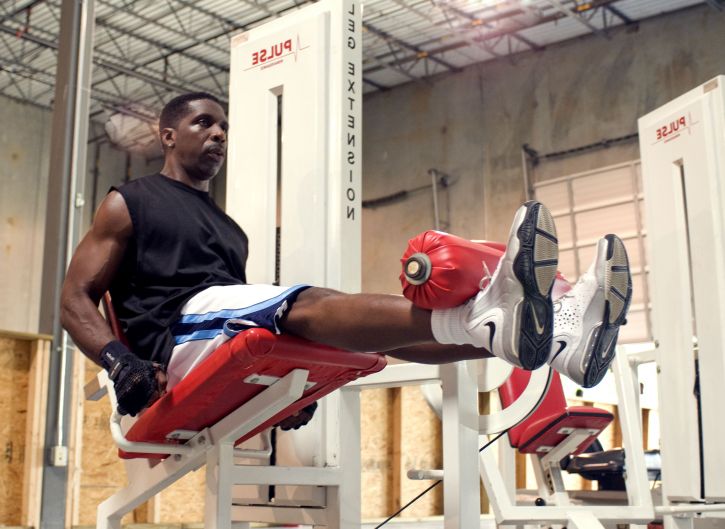- You are here:
- Home »
- Blog »
- Training »
- What muscles does the leg extension machine work?
What muscles does the leg extension machine work?
Obviously, the leg extension machine targets the muscles in the lower body, but which specific ones it hits during the exercise can be a little trickier to determine. So what muscles does the leg extension machine work?
 A common leg extension machine – Photo By: Amanda Mills
A common leg extension machine – Photo By: Amanda Mills
Muscles directly worked – quadriceps
Muscles indirectly worked – hamstrings, calves
Not so surprisingly, the legs are hit during the leg extension exercise. That shouldn’t be a shock, but it doesn’t work all muscles evenly. The primary target muscle hit is the quadriceps. As the name implies, the quads are made up of 4 different muscles and comprise the upper, front portion of the legs.
The 4 muscles that make up the quads are – from inner thigh to outer thigh – the vastus medialis, vastus lateralis, vastus intermedius, and rectus femoris. Depending on how you are sitting on the machine and your build in general, not all 4 muscles are worked evenly.
A more narrow stance – with legs close together – on the machine will work your outer quads more. A wider stance – with legs spread further apart – will work the inner quads more directly.
The hamstrings and the calves are muscle groups that are worked more indirectly in this lift. While they aren’t responsible for the bulk of work performed, they are important for stabilization purposes. The hamstrings and the calves must be stable and able to support the weight being used during the exercise. While they are important for stabilization, they are not worked nearly as much as they are on a leg press.
Related: 5 Best Leg Extension Alternatives
You can see a proper demonstration of the leg press exercise in the video below. Getting seated in the right position is important to maximize your time on the machine. You want to make sure the back rest, seat and leg pad are in the right positions. Doing this incorrectly can cause you to overextend parts of your body into uncomfortable positions.
Many people like doing leg extensions, because they seem relatively easy compared to other leg exercises and they can really show off by using some serious weight.
As you are sitting down and just extending your legs, your strong quad muscles are isolated and get to show what they can do. Without having to hold weight on your back and balance yourself, like in the back squat, you can do a lot. However, this means you are only working those specific leg muscles and the rest of your body is getting little benefit.
Whether the leg extension machine is a good exercise for you is another debate entirely. While many believed that using the leg extension machine could help balance out the lower body muscles, actually doing that can be tricky.
The stance used during the leg extension is crucial if you are hoping to use these to develop balance. Another way to look at this is by looking at the position of the toes during the lift. Basically, targeting a specific muscle of the quad is challenging, but can potentially be done if you know what you are doing.
For athletes and others looking to do functional training, leg extensions may not be the best way to spend your time. Functional training aims to put the athlete in situations that more closely mimic their sport, and not many sports require you to sit down and isolate an individual muscle group.
Exercises like the back squat, front squat, deadlift, and even leg press can hit the quadriceps just as hard while also working other muscles. These are generally a more efficient way to train. Those exercises put your body in situations that more closely mimic your spot and force you to use other body parts.
Think about it. You could have a very weak core and it still may be possible to move some serious weight on leg extensions. How weak can your core be if you want to push some weight on the front squat?
Isolating muscles does have a place, though. In the bodybuilding world, isolating different muscle groups is important for balance an symmetry. If you have a specific weakness, isolation may be a great idea.
The muscles worked on a leg extension machine depends slightly on your build and the stance you are using. Regardless of your specific setup, most of your quadriceps will be targeted.

